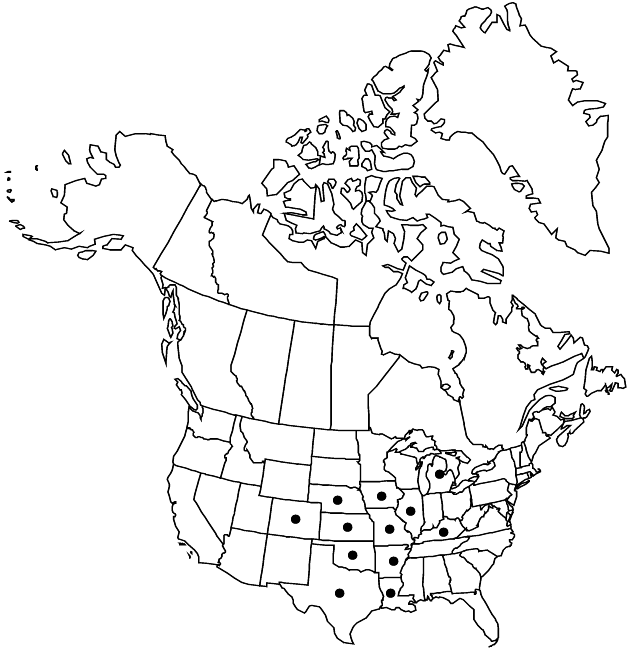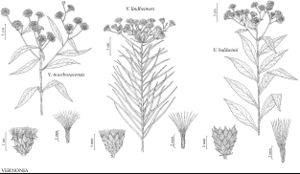Vernonia baldwinii
Ann. Lyceum Nat. Hist. New York 2: 211. 1827.
Plants 6–10 (–15) dm. Stems puberulent to ± tomentose. Leaves mostly cauline; blades elliptic to lanceovate or lanceolate, 8–15 (–18+) cm × 20–45 (–75+) mm, l/w = 2–5, abaxially usually puberulent to tomentose or pannose (hairs ± erect, ± curled), seldom glabrate, resin-gland-dotted, adaxially scabrellous, glabrescent, not resin-gland-dotted. Heads in corymbiform-scorpioid arrays. Peduncles 1–25 mm. Involucres broadly campanulate to hemispheric, 4–6 (–8+) × 4–7+ mm. Phyllaries 45–65+ in 5–6 series, usually puberulent (often resin-gland-dotted distally), sometimes glabrescent, margins ciliolate, the outer lanceovate, 1–2 mm, inner oblong to lanceolate, 5–8+ mm, tips rounded-apiculate to acute (sometimes recurved). Florets (15–) 20–25 (–35+). Cypselae 2.5–3 mm; pappi fuscous to purplish, outer scales 25–30, 0.2–1 mm, contrasting with 35–40+, 5–7+ mm inner bristles. 2n = 34.
Phenology: Flowering Jun–Nov.
Habitat: Disturbed places, grasslands, flood plains, forest margins, prairies
Elevation: 10–1100 m
Distribution

Ark., Colo., Ill., Iowa, Kans., Ky., La., Mich., Mo., Nebr., Okla., Tex.
Discussion
Regarding Vernona baldwinii and V. interior, L. H. Shinners (1950) wrote, “The tips of the phyllaries vary from loosely appressed to squarrose, and from puberulent to almost completely glabrous on the inner face. The geographic distribution of the two extremes is nearly identical. I consider the two to be merely forms of one species.” I concur.
Selected References
None.
Lower Taxa
"dm" is not declared as a valid unit of measurement for this property."dm" is not declared as a valid unit of measurement for this property."dm" is not declared as a valid unit of measurement for this property.
